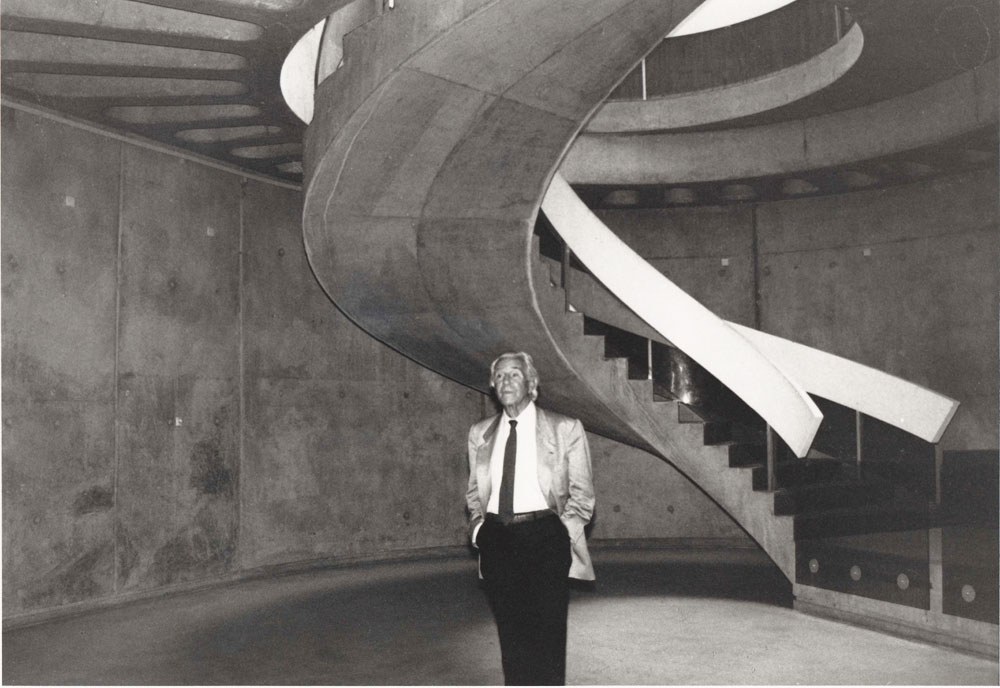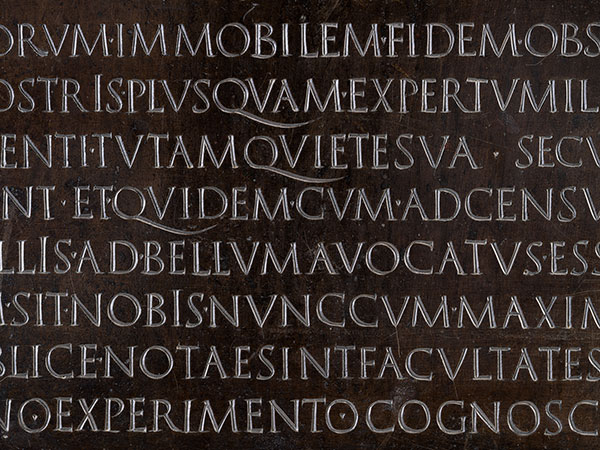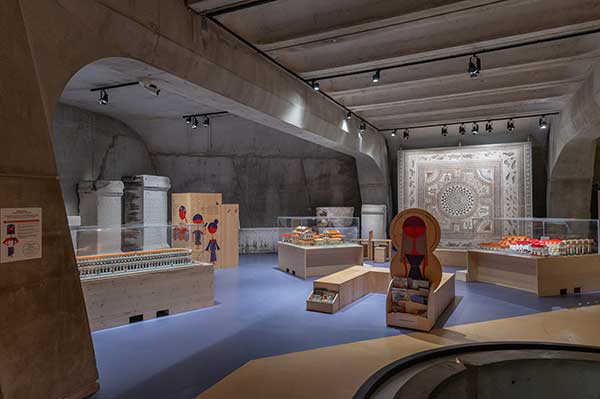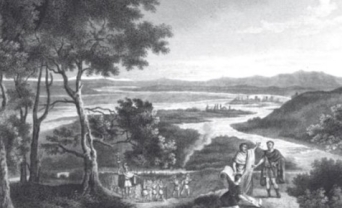From a strong idea...
The museum and the theaters are located on the slopes of Fourvière Hill, on the very site where the Roman city of Lugdunum was founded in 43 B.C..
The idea of creating a museum to house objects related to the Roman city of Lyon was first discussed in the thirties. But it wasn't until the sixties that the project took shape and was entrusted to the architect Bernard Zehrfuss.
Zehrfuss was responsible for the idea of burying the building so that it would fit smoothly into the exceptional setting around it and would not "offend the professionalism of my Roman colleagues". Construction began in 1972. The museum was inaugurated on November 15, 1975.
...to a bold museum
Nearly invisible from the outside, the museum blends into the landscape of a unique archaeological site composed of two major monuments of the city of Lugdunum: a theater and an odeon, both of which are part of a UNESCO World Heritage site. (Photo building / site) The concrete structure disappears under the vegetation, and two large windows channeling light make the theaters part of the exhibition.
One of the remarkable characteristics of the building is the aesthetic quality of the reinforced concrete, both inside and outside.
Providing a very simple background, the architecture highlights the works. The customary arrangement of rooms has been replaced by open spaces following a large spiral ramp.
The life of the first inhabitants of Lyon in Roman times
Lugdunum has one of the finest archaeological collections in France. Covering a 4,000-square-meter surface, the museum presents all the aspects of public and private life in an imperial capital: urban layout, municipal administration, the army, currency, religions, circus games and trade; it houses real treasures that tell of the origins of the Lyon metropolis.
Discover the life of the first residents of Lyon, from prehistoric times to the emergence of Christianity in Gaul!
ZEHRFUSS ( 1911 - 1996)
Bernard Zehrfuss entered the French National School of Fine Arts at 17 and received the Grand Prix of Rome in 1939. He turned toward the modern movement, which featured the use of new materials. The most flagrant example of this approach is the museum: the entire building is made in unsurfaced reinforced concrete.
Among his major works are the CNIT Exhibition Center at La Défense and the UNESCO building in Paris, which give him a quasi-official status as the "standard bearer" of modern architecture.
Not-to-miss masterpieces
History puts in an appearance with the Lyon Tablet, discovered in 1528, which reproduces in bronze the speech that Emperor Claudius, born in Lyon, gave to support Gallic participation in the Senate in Rome in the year 48.
Among the beliefs and cults, visitors will discover an enigmatic Gallic calendar, one of the longest documents in the Celtic language currently existing.
The collection of inscriptions, statue bases and epitaphs – one of the largest in France – is an exceptional source for understanding the inhabitant and their activities.
The decoration of homes is evoked by several mosaic floors, such as the so-called "Swastika Mosaic", which visitors are able to walk on.
A place just for children
Dress like the Romans, discover antique games, and learn about gods and goddesses or how people ate. The children's area offers young visitors an immersion in the daily life of Roman times and a learning experience that's lots of fun!







